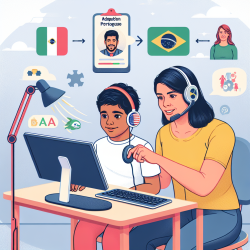Introduction
In the realm of global health, pediatric trauma represents a significant challenge, especially in low- and middle-income countries (LMICs). According to the World Health Organization, traumatic injuries are a leading cause of death among children, with a staggering 90-95% of these fatalities occurring in LMICs. This highlights an urgent need for effective trauma education tailored to these regions. A recent systematic literature review by Rivas et al. (2022) sheds light on the current state of pediatric trauma education in LMICs and suggests pathways for improvement.
Key Findings from the Review
The review identified 39 studies that examined 16 unique trauma training programs implemented in LMICs. The findings were promising, showing that these programs generally improved provider knowledge and reduced trauma-related morbidity and mortality. However, a significant gap was noted: the lack of pediatric-specific content in most curricula.
Among the 16 identified curricula, only two were specifically designed for pediatric trauma, while others included minimal pediatric content. This is concerning given the distinct physiological and clinical needs of pediatric patients, which differ significantly from adults. The review emphasizes the necessity for more comprehensive pediatric trauma education to equip healthcare providers with the skills needed to manage pediatric cases effectively.
Implications for Practitioners
For practitioners in LMICs, the review underscores the importance of advocating for and implementing more pediatric-focused trauma education. Here are some actionable steps:
- Advocate for Curriculum Development: Engage with educational institutions and health ministries to develop and implement pediatric-specific trauma curricula.
- Utilize Available Resources: Leverage existing resources such as the Advanced Pediatric Life Support (APLS) and Jamaican Pediatric Trauma Course (JPTC) as models for developing local programs.
- Participate in Training: Attend and encourage participation in trauma training programs that include pediatric components to improve competency in managing pediatric trauma cases.
- Conduct Further Research: Collaborate with researchers to study the impact of pediatric trauma education on patient outcomes and identify best practices for curriculum development.
Encouraging Further Research
While the review provides a comprehensive overview of current pediatric trauma education in LMICs, it also highlights the need for further research. Future studies should focus on:
- Standardizing Curriculum Content: Develop standardized guidelines for pediatric trauma education to ensure consistency and quality across different programs.
- Evaluating Educational Impact: Conduct longitudinal studies to assess the long-term impact of pediatric trauma education on healthcare outcomes in LMICs.
- Exploring Innovative Teaching Methods: Investigate the use of technology and simulation-based learning to enhance the delivery of pediatric trauma education.
Conclusion
The systematic review by Rivas et al. (2022) serves as a crucial call to action for enhancing pediatric trauma education in LMICs. By prioritizing the development and implementation of comprehensive pediatric trauma curricula, we can significantly improve healthcare outcomes for children in these regions. Practitioners, educators, and policymakers must collaborate to bridge the current educational gaps and ensure that healthcare providers are well-equipped to manage pediatric trauma cases effectively.
To read the original research paper, please follow this link: Paediatric trauma education in low- and middle-income countries: A systematic literature review.










